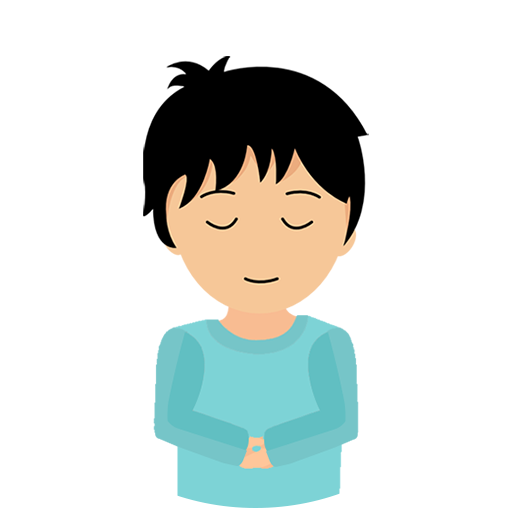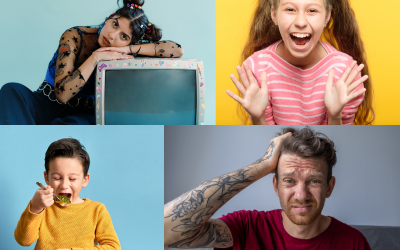Hyperactivity is characterized by excessive motor activity and difficulty sitting still or concentrating on a given task. Impulsivity, on the other hand, manifests itself in spontaneous actions without prior thought. These behaviors can be caused by various factors, such as chemical imbalances in the brain, genetic factors or environmental factors. Common symptoms include constant agitation, difficulty following instructions, impulsive responses and difficulty concentrating. It’s important to understand these behaviors in order to manage them appropriately.
Establish a structured daily routine
Encourage physical activity and regular breaks
Regular physical activity is beneficial for children with hyperactivity and impulsivity. They help to channel their excessive energy and promote concentration. Regular breaks are also important to allow the child to rest and recharge. We recommend encouraging your child to take part in physical activities such as dancing, cycling, swimming or yoga. Breaks can be used for quiet activities such as reading, drawing or meditation.

100% educational
The COCO PENSE et COCO BOUGE application has been awarded the Educational App Store label. Over 30 educational games for children aged 5 to 10. Every 15 minutes of play, there’s a sports break, to teach children to detach themselves from screens in a fun way.


Use relaxation and meditation techniques
Relaxation and meditation techniques can help children with hyperactivity and impulsivity to calm down and concentrate. Deep breathing, guided visualization and muscle relaxation exercises are just some of the techniques that can be used. It’s important to teach your child these techniques, and to practice them regularly with him or her. This can help them develop self-regulation skills and manage stress and anxiety.

The Quiet Time game on COCO BOUGE
Encourage open, honest communication with the child
Avoid distractions and excessive stimulation
Use positive rewards and reinforcements
The use of rewards and positive reinforcement is a proven strategy for encouraging desirable behaviors and improving the management of hyperactivity and impulsivity in children. This approach not only boosts their motivation but also boosts their self-esteem. To maximize its effectiveness, here are some enriched and nuanced ways to apply it.
Customize Rewards
- Know your child’s interests: Choose rewards that match the child’s passions and interests. Whether it’s a book on a subject he loves, extra time to play his favorite game, or a special activity with a relative, personalized rewards are more valuable.
- Vary the rewards: Alternate between different types of reward to maintain the child’s interest. This can include verbal praise, stickers, small toys, or experiences, such as a trip to the park.
Positive reinforcement in everyday life
- Make praise part of your daily routine: Don’t reserve praise for big successes only. Acknowledge your child’s daily efforts, such as finishing homework, tidying his room, or sharing with siblings.
- Create a points or token system: For long-term goals, a points or token system can be particularly motivating. The child accumulates points for specific behaviors, which can then be exchanged for a larger reward.
Defining Clear Expectations
- Use behavior charts: A visual behavior chart can help children clearly understand what is expected of them. This provides a visual reference of desired behaviors and progress toward rewards.
- Set achievable goals: Set goals that are within the child’s reach, to avoid frustration. Frequent successes boost motivation and self-confidence.
Fair and Consistent Approach
- Provide immediate feedback: Positive rewards and reinforcements are most effective when given immediately after the desired behavior. This reinforces the link between behavior and reward.
- Balancing consequences: While the emphasis is on the positive, it’s important to have clear and fair consequences for inappropriate behavior. These must be proportional, predictable and explained to the child in advance.
Encouraging self-evaluation
- Involve the child in the process: Encourage the child to reflect on his or her own behavior and evaluate him or herself. This develops its autonomy and ability to self-regulate.
- Celebrate progress, not just results: Recognizing efforts and improvements is just as important as celebrating successes. This teaches the child that the process, not just the outcome, is valued.
By implementing these strategies, you create an encouraging environment where the child feels supported and motivated to adopt positive behaviors, while developing a positive self-image and self-regulation skills.
Setting clear, consistent limits
Clear, consistent limits are essential to help children with hyperactivity and impulsivity understand what is expected of them. It’s important to establish simple, understandable rules, explain them to the child and apply them consistently. It’s also a good idea to explain the consequences of breaking the rules. Boundaries help children feel secure and develop a sense of responsibility.
Involving children in decision-making and problem-solving
Involving children in decision-making and problem-solving can boost their sense of autonomy and self-confidence. It’s important to encourage children to express their opinions, participate in family discussions and make age-appropriate decisions. When there’s a problem, it’s useful to work with the child to find solutions together. This can help develop their problem-solving skills and strengthen their ability to make informed decisions.
Collaborate with teachers and healthcare professionals for comprehensive support
Collaboration with teachers and health professionals is essential to provide comprehensive support for the child. It’s important to share relevant information about the child’s behavior, needs and progress. Teachers can provide additional strategies for managing the child’s behavior at school, while health professionals can offer appropriate advice and treatment. It’s important to establish open and regular communication with these people, so that we can work together for the child’s well-being.
Raising a child with hyperactivity and impulsivity can be a challenge, but with the right strategies and techniques, it’s possible to create an environment conducive to their development. By establishing a structured daily routine, encouraging physical activity and regular breaks, using relaxation and meditation techniques, promoting open and honest communication, avoiding distractions and excessive stimulation, using positive rewards and reinforcements, setting clear and consistent limits, involving the child in decision-making and problem-solving, and collaborating with teachers and health professionals, parents can help their child thrive and succeed. It’s also important to seek additional support and resources if necessary.
Other articles that might interest you:
Supporting children with autism
Dynseo proposesSUPPORTING CHILDREN WITH AUTISM with COCO THINKS AND COCO MOVESDynseo and its team are very much...
Supporting DYS children with COCO THINKS and COCO MOVES
Dynseo proposesDYS disorders with COCO THINKS and COCO MOVESOur educational and pedagogical games program COCO THINKS...
Language development
Children communicate from birth with movements, crying, looking at each other or with smiles. After only a few months,...
Supporting children with Down Syndrome with Coco
Dynseo proposesDOWN SYNDROME with COCODown syndrome is a non-hereditary chromosomal abnormality that leads to the...
Supporting people after a stroke
Dynseo proposesStroke with CLINT, your brain training coachThe Dynseo team is very involved in helping people who have...
Supporting someone with Alzheimer’s
In this guide, we will detail how SCARLETT can be used for supporting someone with Alzheimer's. SCARLETT is a...
10 myths about the human brain you didn’t know
The brain is an incredible muscle, however there are many things we do not know, and what we do know is not always...
Using Digital Tools to Support Students with Special Educational Needs
Special Educational Needs (SEN) encompass a wide range of learning difficulties and disabilities that can hinder a...
Down Syndrome and Communication: Facilitating Interaction with Visual and Interactive Supports
When we think about Down syndrome, we often recognize it as a genetic condition that affects physical and cognitive...
How to Track Progress in People with Down Syndrome Using Digital Tools
Down syndrome, a genetic condition caused by the presence of an extra chromosome 21, affects approximately 1 in every...












